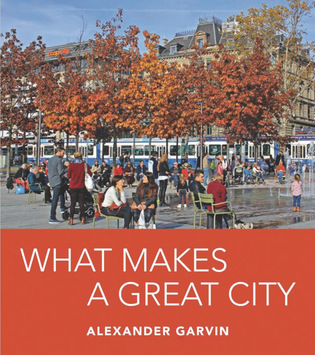 loading
loading
Reviews: March/April 2017 View full imageWhat Makes a Great City Charles Rosenblum ’87 is a Pittsburgh-based writer specializing in the built environment and visual arts. Alexander Garvin had just completed master’s degrees in architecture and urban studies at the Yale School of Architecture when he started teaching there in 1967. “For most of my adult life,” he notes, “I have been observing and writing about the major municipal centers of the world.” Garvin found the question of greatness compelling, fodder for a fresh round of travel and writing in his favorite American and European cities. Greatness in cities, he argues, depends on the public realm—the streets, squares, and parks—where the public has freedom of movement and activity. Garvin also requires that, to be successful, the public realm simultaneously support markets, urbanization, and civil society. The chapters through which these explanations unfold seem dutiful in their organization: the definition is a list, then a chapter, then the structure of the book. But Garvin undertakes substantive historical and design explanations, which connect with seamless prose. The geographic examples are continuing pleasures, posturing as a textbook but never far from the sensibility of a travelogue. He can revel in a day at the Plaza Mayor in Salamanca, “wander[ing] around inspecting the lit-up monuments,” or move quickly between Central Park’s ballfields and the Boulevard St. Michel in Paris. A self-described empiricist, Garvin avoids arcane theory, to the advantage of readability. Yet the appeal to greatness has limitations. We can love the well-observed Parisian examples and still wish for an engagement with intractable issues of race and social justice in its suburbs and elsewhere. We can admire Brooklyn’s Eastern Parkway and still look for engagement of sustainability.
The comment period has expired.
|
|